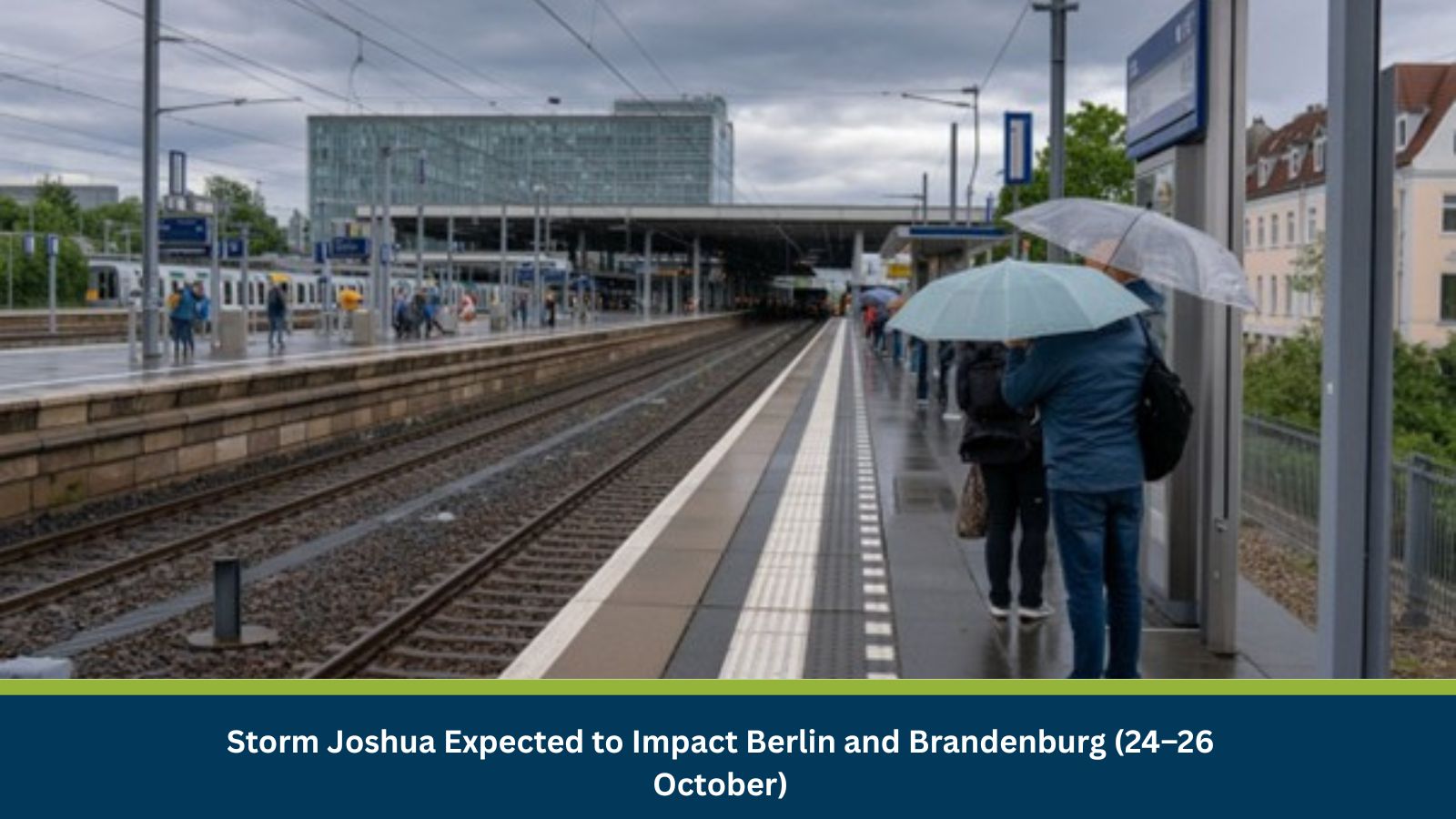What is Risk Analysis in the Context of Environmental Events
Environmental risk analysis evaluates how severe weather—storms, floods, or extreme winds affect safety, infrastructure, and business continuity. In Germany, storm systems moving across Central Europe frequently cause large-scale disruption, especially in densely populated urban corridors like Berlin–Brandenburg. Historical patterns, including Storm Sabine (2020) and Storm Poly (2023), show recurring risks of fallen trees, widespread power outages, and prolonged delays in public transport networks. Timely risk monitoring allows organizations to activate contingency measures that protect personnel, assets, and operations from both direct weather impacts and cascading secondary effects.
Executive Summary
- Date of Incident: 24–26 October 2025
- Location: Berlin and Brandenburg, Germany
- Risk Category: Environment
- Severity Score: 4/5
- Confidence Level: 85%
Storm Joshua is forecast to impact Berlin and Brandenburg from Friday (24 October) through Sunday (26 October), bringing strong winds, heavy rainfall, and potential infrastructure damage. The storm’s three-day duration coincides with elevated vulnerability due to ongoing public works and dense urban construction in the region. Past storms of similar magnitude have resulted in travel paralysis, power failures, and property damage.
Primary risks include road and rail closures, falling debris hazards, and temporary disruption to utilities and communications. Impacts are likely to peak on Saturday, with cleanup and restoration operations extending into early next week.
Current Updates
The German Weather Service (DWD) has issued advance alerts for heavy rainfall and winds up to 100 km/h, advising residents to secure outdoor objects and avoid unnecessary travel. BVG and Deutsche Bahn (DB Regio) are preparing for potential service delays and cancellations. Local governments in Berlin and Potsdam have activated early readiness protocols, including inspection of critical infrastructure and drainage systems.
Known Hotspots and Sensitive Areas
- High Impact: Grunewald forest area, Tiergarten, and major routes like A10 (Berliner Ring) and A115, vulnerable to fallen trees and debris.
- Medium Impact: Inner-city districts including Mitte, Charlottenburg, and Potsdam, where waterlogging and construction hazards may affect mobility.
- Low Impact: Outlying Brandenburg towns with limited urban density but potential power disruptions.
Recurrence risk remains elevated through late October due to continued low-pressure systems over northern Europe.
Impact on Transportation and Services
Strong winds and rain are likely to cause major delays and cancellations across S-Bahn, U-Bahn, and regional train networks. Road closures are expected on forested and low-lying routes, with public bus and tram services impacted by fallen debris. Air traffic at Berlin Brandenburg Airport (BER) may experience delays or diversions. Logistics and delivery services should anticipate significant route disruption and extended transit times.
Recommended Actions
- Employee Safety & Mobility: Advise remote work from 24–27 October; limit travel during peak storm hours; ensure staff receive real-time DWD and BVG alerts.
- Asset Protection: Inspect rooftops, windows, and drainage systems; secure outdoor signage and movable assets; verify backup power and IT continuity systems.
- Continuity Operations: Activate business continuity plans focusing on data integrity, remote operations, and supply chain rerouting; coordinate with service providers in advance.
- Situational Awareness: Establish a response cell to monitor DWD, Polizei Berlin, and BVG advisories; provide hourly updates to employees and key clients.
Multidimensional Impact
Storm Joshua’s intensity may strain public infrastructure, cause short-term power failures, and delay emergency responses. Waterlogging and fallen trees can disrupt cleanup operations, extending restoration efforts. Businesses may face short-term revenue loss and delays in supply movement across Berlin and Brandenburg. If rainfall persists beyond 26 October, localized flooding could trigger extended utility outages and administrative response delays.
Emergency Contacts
- Police: 110
- Fire and Ambulance: 112
- German Weather Service (DWD): www.dwd.de
- BVG (Public Transport): www.bvg.de
- Deutsche Bahn (DB Regio): www.bahn.de
Final Thoughts
The projected trajectory of Storm Joshua indicates a high-severity, short-duration environmental event likely to cause widespread but manageable disruption. Key watchpoints include transport continuity, power infrastructure stability, and public safety in wooded and low-lying zones. Stay ahead of operational risks with real-time alerts, scenario modeling, and expert advisories with datasurfr’s Predict. Start your 14-day free trial of Datasurfr’s Risk Intelligence Platform today.






